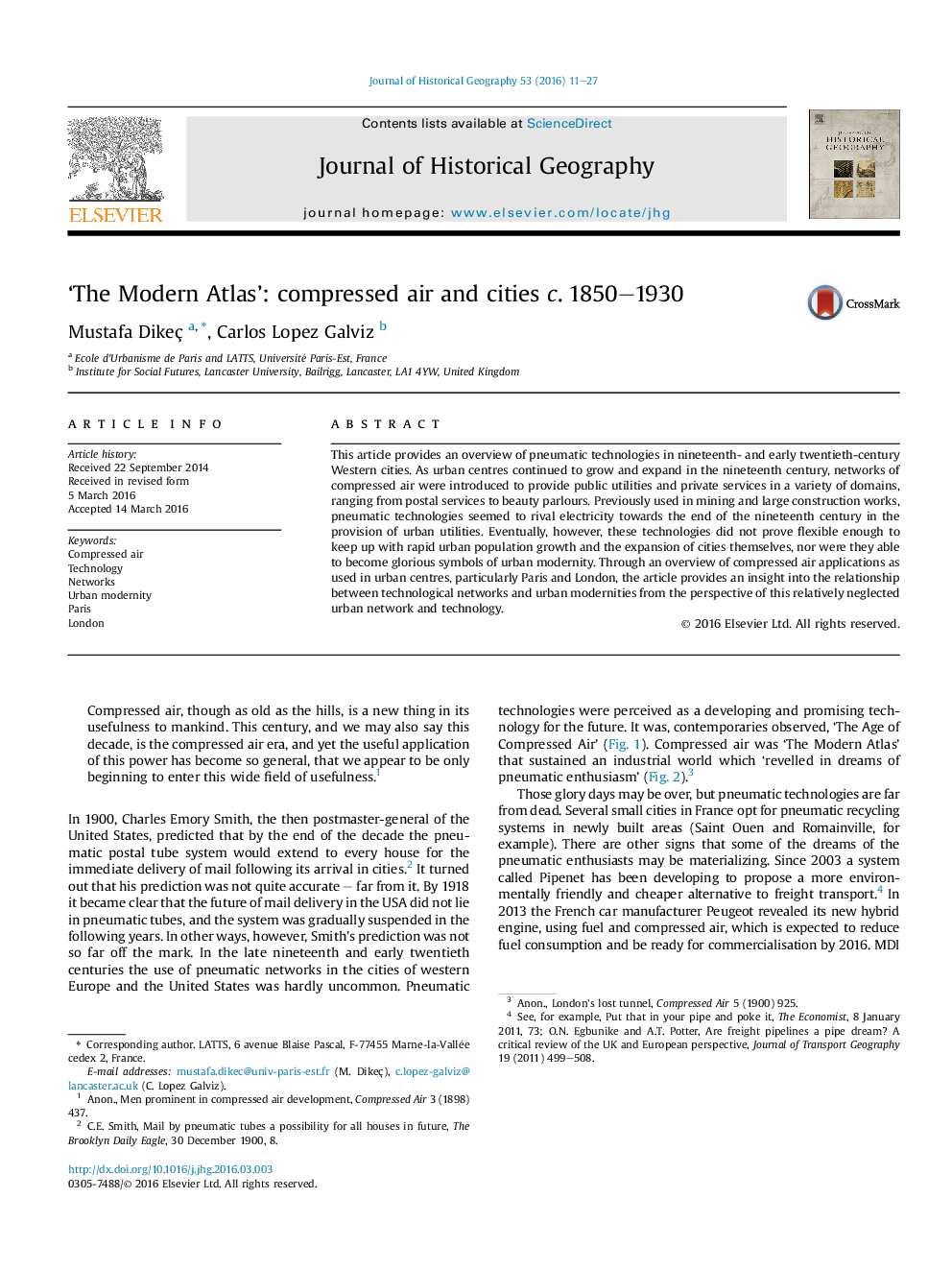| Article ID | Journal | Published Year | Pages | File Type |
|---|---|---|---|---|
| 1038878 | Journal of Historical Geography | 2016 | 17 Pages |
•Demonstrates that pneumatic technologies were significant parts of nineteenth-century urban technological networks.•Illustrates how pneumatic urban networks were obscured by electricity, and failed to become prominent symbols of urban modernities.•Shows the role urban imaginaries play in understanding the relationship between urban modernities and technological networks.
This article provides an overview of pneumatic technologies in nineteenth- and early twentieth-century Western cities. As urban centres continued to grow and expand in the nineteenth century, networks of compressed air were introduced to provide public utilities and private services in a variety of domains, ranging from postal services to beauty parlours. Previously used in mining and large construction works, pneumatic technologies seemed to rival electricity towards the end of the nineteenth century in the provision of urban utilities. Eventually, however, these technologies did not prove flexible enough to keep up with rapid urban population growth and the expansion of cities themselves, nor were they able to become glorious symbols of urban modernity. Through an overview of compressed air applications as used in urban centres, particularly Paris and London, the article provides an insight into the relationship between technological networks and urban modernities from the perspective of this relatively neglected urban network and technology.
